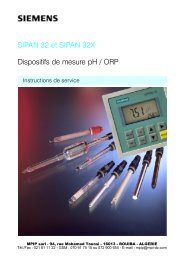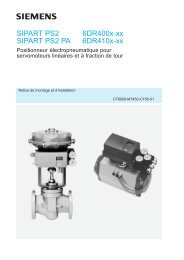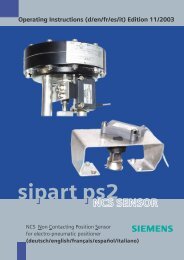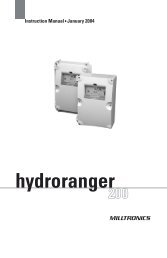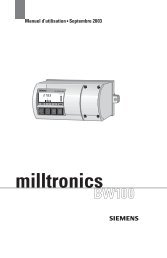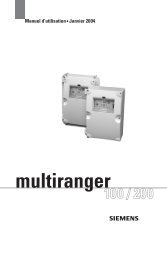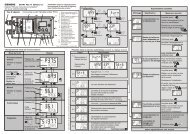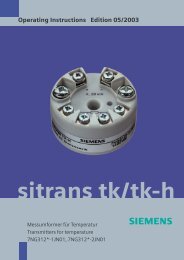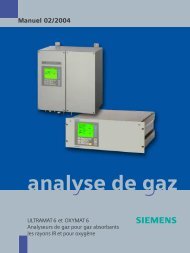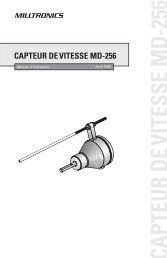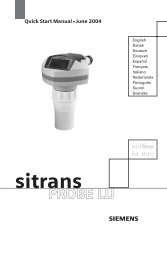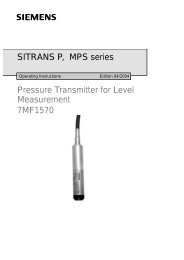FLK Gas Sampling System - MPIP - Free
FLK Gas Sampling System - MPIP - Free
FLK Gas Sampling System - MPIP - Free
- No tags were found...
Create successful ePaper yourself
Turn your PDF publications into a flip-book with our unique Google optimized e-Paper software.
SQ253 Valve Combination<br />
3. Operation<br />
3.1 General information<br />
This equipment unit has been supplied functionally tested. Therefore, no complicated checks of the separately installed<br />
devices are needed.<br />
3.2 Start-up<br />
Warning! The valve combination in conjunction with the withdrawal device must only be put into operation by<br />
qualified personnel, who are familiar with all maintenance measures. Unauthorized operation and improperly carried out<br />
start-up procedures can cause damage.<br />
The start-up is mainly restricted to a check of the wiring, a functional check and a leakage test of the complete measuring<br />
equipment.<br />
3.2.1 Electrical start-up<br />
After checking the wring to the control cabinet, the following functional checks can be carried out. These should be done<br />
before the compressed air is switched on.<br />
• The individual settings on the four-way valve should be selected from the PLC controller using the OP3<br />
Operating Panel.<br />
• Similarly, the function of the compressed air valves -Y2, -Y3, -Y4, and -Y5 should be checked.<br />
• It must also be checked whether the flushing is initiated and started by the local push buttons. The flushing<br />
process must also be started by simulating low pressure (turning back the limit switch contacts to -300 mbar).<br />
• The flushing sequence must be checked according to the sequence in the operating manual for the controller.<br />
3.2.2 Compressed air and leakage test<br />
With the compressed air it must be ensured that the 6...8 bar pressure, the quantity and the quality conform to the<br />
specification.<br />
Caution:<br />
There should be no one situated in the front area of the probe.<br />
The compressed air must be shut off immediately if any leaks occur.<br />
Turn-on should be carried out slowly and special attention must be paid to the joining pieces.<br />
The compressed air part with the valves should be checked for sealing tightness (use leak-seeking spray or soap-water<br />
solution as an aid).<br />
After starting the flushing, the connecting lines to the filter and the probe should be tested for sealing tightness once the leakseeking<br />
agent has been applied.<br />
If a compressed air motor is being used on the withdrawal device, the function of the withdrawal valves must be checked.<br />
• In the unenergized state the solenoid valve (Figure 2, Item 5) must be open and the compressed air motor driven.<br />
• When the pneumatic limit switch on the withdrawal device is operated, the pneumatic valve (Figure 2, Item 4)<br />
closes and shuts off the compressed air feed to the motor.<br />
Note: The solenoid valve must close absolutely tight when energized, because otherwise the traverse carriage will<br />
move slowly in operation.<br />
Copyright ® SIEMENS Page 66 04/04


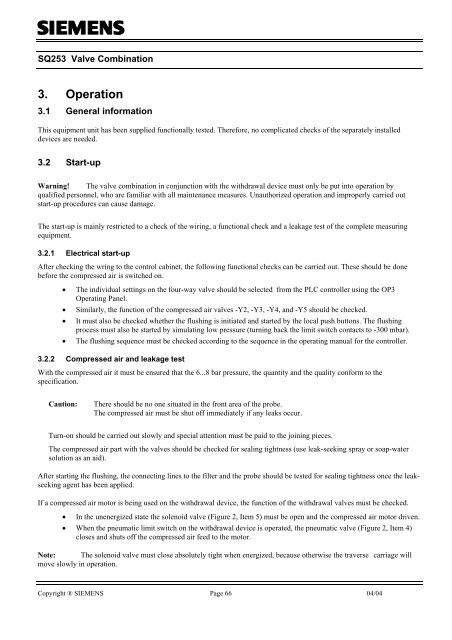
![[ ]](https://img.yumpu.com/53283450/1/184x260/-.jpg?quality=85)
